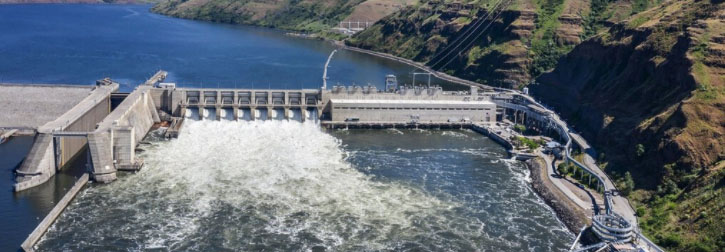||| FROM THE SEATTLE TIMES |||
Breaching the four Lower Snake River dams is not an option yet, Washington Gov. Jay Inslee and U.S. Sen. Patty Murray, D-Wash., said Thursday in a statement outlining the findings of a joint report on dam removal and salmon recovery.
Their announcement comes after the Biden administration weighed in on the issue last month, giving proponents hope that a swift resolution was on the horizon. Washington relies heavily on hydroelectric power generated through dams, but the impacts they have on salmon, orcas and tribal fishing grounds have become impossible to ignore, thanks to drought, heat waves, reduced snowpack and other facets of climate change felt in recent years.
But dam removal in any capacity would reduce the state’s portfolio of renewable energy amid ambitious efforts to transition away from fossil fuels by 2050.
At the moment, dam removal isn’t entirely a partisan issue.
Removing federal dams requires congressional approval. Murray said she will not support an immediate push in Congress because it lacks bipartisan support, and not all Democrats are guaranteed to vote for it.
“It’s clear that breach is not an option right now — while many mitigation measures exist, many require further analysis or are not possible to implement in the near-term,” Murray said in a statement.
Controversy shrouding the removal of the four dams in southeastern Washington has long fueled a political debate over salmon recovery, tribal rights, energy and climate change. The decadeslong discourse intensified this summer as environmental advocates pushed for more regional political support.
“We are adamant that, in any circumstance where the Lower Snake River Dams would be breached, the replacement and mitigation of their benefits must be pursued before decommissioning and breaching,” the joint statement said Thursday.
In June, a draft report commissioned by Inslee and Murray estimated it would cost between $10.3 billion and $27.2 billion to replace the collective benefits for energy, irrigation and recreation provided by the four Lower Snake River dams.
While the report did not take a position on whether the hydroelectric dams should be removed, it found that breaching the dams will offer the best chance for salmon runs to recover in the Columbia and Lower Snake rivers, and for honoring tribal rights promised by the federal government.
**If you are reading theOrcasonian for free, thank your fellow islanders. If you would like to support theOrcasonian CLICK HERE to set your modestly-priced, voluntary subscription. Otherwise, no worries; we’re happy to share with you.**










So if we are concerned about the Southern Resident Orcas, we had better come up with some other solution, and do it now!
How long can the orca survive on the current declining stock of salmon on which to feed? Will the debate over damn removal end and mitigation measures be put in place in 10 years? Will the increase in salmon runs on the Snake River begin 5 or more years once the damns are breached.? Are we looking a 10 -15 years before the orcas see results?
Why not build a very large tide water salmon hatchery now. Release 10’s of millions of smolt into Puget Sound. The return could be in 3-5 years.
Mitigation measures were put in place for each of the dams when they were built. Millions of hatchery salmon are released in the Columbia River each year. That’s why there are more than double the number of returning salmon now in the Columbia River system than before the first dam existed.
There are already 25 fish hatcheries programs that support Puget Sound Chinook salmon.
And BTW, salmon reproduce in fresh water, not tide water.
NOAA has a 2021 science document out that says 80-90% of the SRKW’a diet are Chinook stock from Canada’s Frasier and Thompson Rivers.
Thanks Robert,
So all the hatcheries and mitigation measures are doing the job? If so, why do we have a problem?
I have heard people in the SRKW interest groups say that the number of returning salmon now in the Columbia River is far less than before the dams, not double. The same has been said of salmon in Puget Sound. Remember, there used to be salmon canneries operating here. Gone now. Wonder why?
I have also heard that in the good old days, the salmon fishery in Puget Sound was composed of many fish migrating south around both side of Vancouver Island and on to the Columbia. Now that is not true due to the low numbers of the stocks in the Columbia Basin. So your NOAA report is likely correct. But could there be more fish coming through Puget Sound headed to the Columbia if those stocks were restored?
I guess I should have said, fresh water that does not have a damn between the hatchery and salt water. That is much more accurate.
So as an interim step, why not spend money on a really big (fresh water, not damn in-between) hatchery in Puget Sound. I know that these are not wild fish but they well may save the SRKW’s. Not a bad outcome, would you say?